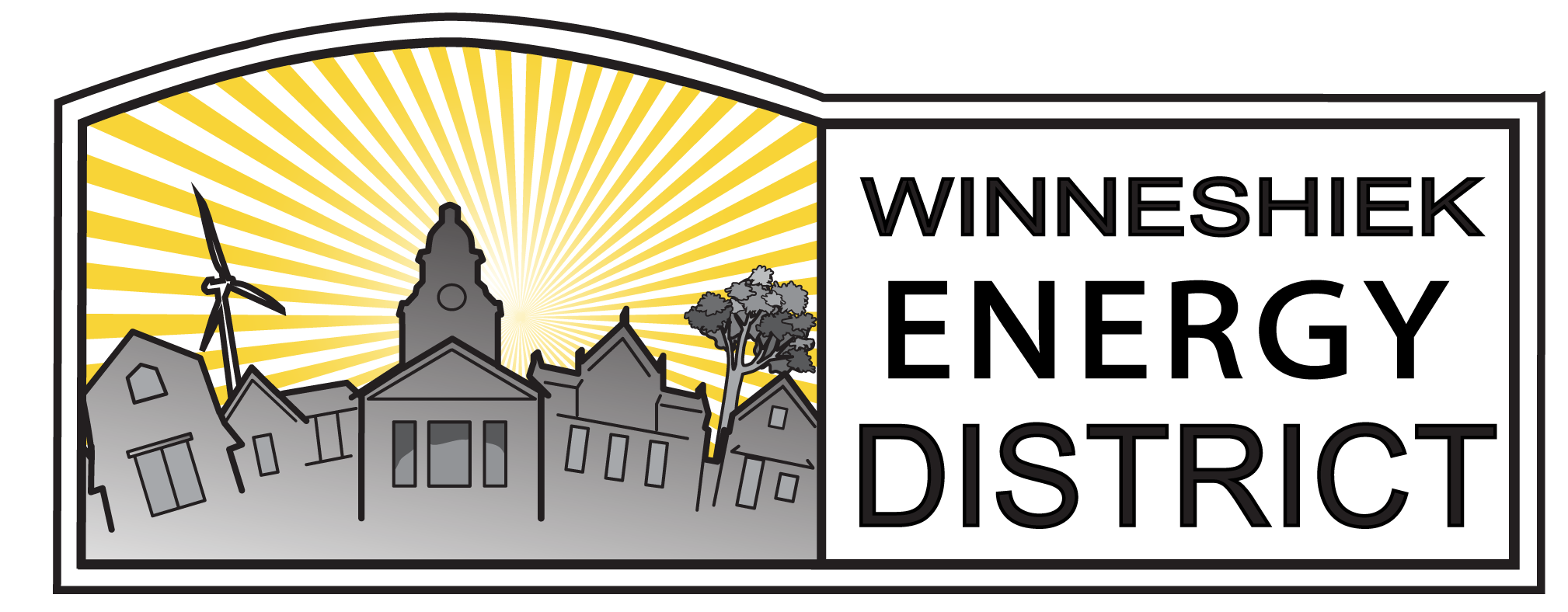Electrification at 120 Volts
Paul Cutting, Energy Planner
Most of us probably understand the general concept and benefits of home electrification. Electrify all aspects of our daily lives–from space heating, water heating, home cooking, to transportation–while at the same time increasing the share of renewables on the power grid. After all, in 2021 about 57% of Iowa’s power mix came from renewables. Grid power aside, electrification presents many challenges and expenses beyond just the cost of swapping old equipment for new, like ensuring home electrical panels can handle the increased power loads of new EV’s, solar arrays, heat pumps and induction stoves.
Many older homes have electrical panels sized for 100 amps, which is usually inadequate for whole-home electrification. And if the costs of swapping old panels for new 200 amp versions weren’t enough, the power supply from the utility pole to the house sometimes has to be upgraded. And to complicate issues even further, swapping out appliances isn’t as simple as removing one and adding a new; you have to bring new 240 volt supplies to the location of the appliance while also ensuring your main panel has adequate space for several new breakers and the load capacity to handle it all. Enter new 120 volt appliances like water heaters and induction stoves that can be plugged into existing outlets and circuits.
Before we go any further, adding new, high current loads to existing 120 volt circuits definitely has potential use and safety issues and in many cases isn’t a suitable alternative for a dedicated 240 volt circuit. For example, the number of things that can be plugged into a single wall circuit can’t exceed the power rating of that particular circuit, which is about 1,500 watts at 120 volts. Plug two 1,000 watt space heaters into the same outlet, and the breaker will trip. And while a 15 amp circuit can technically carry 15 amps at any given time, it’s not intended to be used that way on a long term basis. Another important safety consideration is that 120 volt loads are balanced between the two incoming 120 volt supply wires at the breaker box. Homes are supplied by two, 120 volt wires that cumulatively add up to 240 volts. 120 volt circuits, like those that power lights and outlets, should be connected relatively evenly between the two incoming supply wires. But setting these issues aside, the general concept of 120 volt major appliances like water heaters and induction stoves is intriguing, and in some situations potentially solves a substantial roadblock to home electrification.
The first of these appliances is the 120 volt heat pump water heater. Hybrid heat pump water heaters—water heaters that are powered primarily by air source heat pumps coupled with supplemental electric resistance elements—have been on the market for several years, and in some cases use as little as a quarter of the electricity of their electric resistance counterparts. But they still require 30 amp 240 volt power supplies, meaning that if the customer is switching from gas, bringing power to the location of the new water heater is a significant expense.
The new 120 volt version skips the supplemental resistive element altogether and instead relies exclusively on the air source heat pump. Without the resistance supplement, they have longer recharge times, making them unsuitable for households greater than about two people, and must be placed in fully conditioned interior spaces, unlike the hybrid heat pump versions that can be placed in semi-conditioned spaces that get as cold as about 37°f. As a result, Rheem, the first manufacturer to bring these to market, is marketing them toward warm climate applications. But with a small household size and the ability to put the water heater in a fully conditioned space, they should be fully capable, irrespective of climate. In the future, these models might even be paired with integrated batteries to provide supplemental resistance heating as needed and charged with 120 volt power when the heat pump portion of the water heater isn’t being used.
The second category of product is the 120 volt induction stove coupled with lithium battery assist. Electric induction stoves traditionally require 40-50 amp circuits, which given the wire size required to supply 50 amps of current, adds a potentially significant expense when switching from gas. As discussed on a recent Volts podcast, there are a few startup companies working on these models, and the closest one to bringing one to market is Channing Street Copper Company. Their range plugs into a standard 120 volt wall outlet and has a 4 kW lithium iron phosphate battery to provide extra oomph when the 120 volt 15 amp supply isn’t able to cut it. The range can operate when the power goes out and has a built-in outlet that can be used to power other kitchen appliances like your fridge. But don’t expect this product to solve the installation cost challenge, at least not initially, as it’s expected to retail for $6,000. And Channing Street claims that with its built-in 4kW battery, the stove is eligible for the 30% renewable energy tax credit.
Bottom line, these products really aren’t ready for prime time, but they hold interesting potential in making electrification more realistic for more folks. Beginning the first of the year, heat pump water heaters (irrespective of voltage) will be eligible for a 30% tax credit of up to $2,000, and beginning sometime the second half of 2023 to as late as the first part of 2024, heat pump water heaters, induction stoves, and electrical panel upgrade expenses will be eligible an Inflation Reduction Act income-dependent electrification rebate program.
